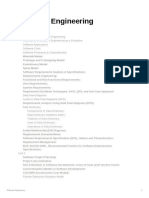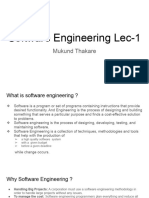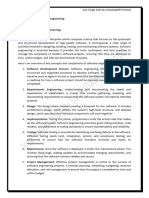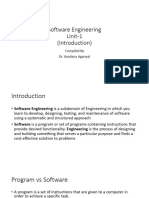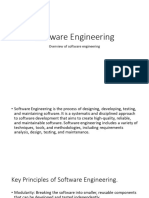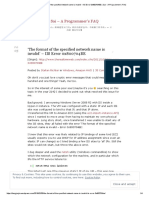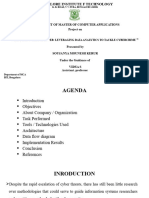0% found this document useful (0 votes)
70 views15 pagesGET211 - Software Engineering Basics I
The document provides a comprehensive overview of Software Engineering, aimed at beginners, covering essential concepts, principles, practices, and career opportunities in the field. It emphasizes the importance of systematic approaches to software development, including methodologies like Agile and Scrum, and highlights key attributes of good software such as efficiency, reliability, and maintainability. Additionally, it outlines various software engineering practices and the significance of effective communication and collaboration in successful project execution.
Uploaded by
reteecentCopyright
© © All Rights Reserved
We take content rights seriously. If you suspect this is your content, claim it here.
Available Formats
Download as PDF, TXT or read online on Scribd
0% found this document useful (0 votes)
70 views15 pagesGET211 - Software Engineering Basics I
The document provides a comprehensive overview of Software Engineering, aimed at beginners, covering essential concepts, principles, practices, and career opportunities in the field. It emphasizes the importance of systematic approaches to software development, including methodologies like Agile and Scrum, and highlights key attributes of good software such as efficiency, reliability, and maintainability. Additionally, it outlines various software engineering practices and the significance of effective communication and collaboration in successful project execution.
Uploaded by
reteecentCopyright
© © All Rights Reserved
We take content rights seriously. If you suspect this is your content, claim it here.
Available Formats
Download as PDF, TXT or read online on Scribd
/ 15
























